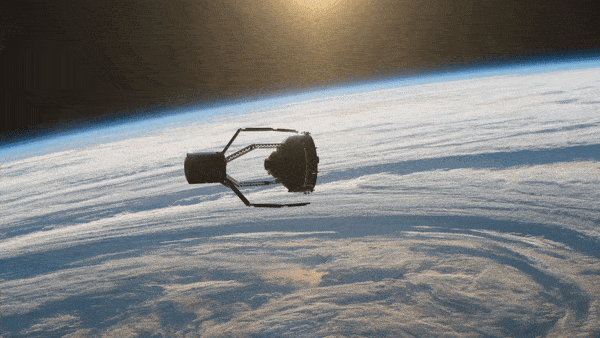Accept all cookies Accept only essential cookies See our Cookie Notice

About ESA
The European Space Agency (ESA) is Europe’s gateway to space. Its mission is to shape the development of Europe’s space capability and ensure that investment in space continues to deliver benefits to the citizens of Europe and the world.
Highlights
ESA - United space in Europe
This is ESA ESA facts Member States & Cooperating States Funding Director General Top management For Member State Delegations European vision European Space Policy ESA & EU Responsibility & Sustainability Annual Report Calendar of meetings Corporate newsEstablishments & sites
ESA Headquarters ESA ESTEC ESA ESOC ESA ESRIN ESA EAC ESA ESAC Europe's Spaceport ESA ESEC ESA ECSAT Brussels Office Washington OfficeWorking with ESA
Business with ESA ESA Commercialisation Gateway Law at ESA Careers Cyber resilience at ESA IT at ESA Newsroom Partnerships Merchandising Licence Education Open Space Innovation Platform Integrity and Reporting Administrative Tribunal Health and SafetyMore about ESA
History ESA Historical Archives Exhibitions Publications Art & Culture ESA Merchandise Kids Diversity ESA Brand Centre ESA ChampionsLatest
Space in Member States
Find out more about space activities in our 22 Member States, and understand how ESA works together with their national agencies, institutions and organisations.
Science & Exploration
Exploring our Solar System and unlocking the secrets of the Universe
Go to topicAstronauts
Missions
Juice Euclid Webb Solar Orbiter BepiColombo Gaia ExoMars Cheops Exoplanet missions More missionsActivities
International Space Station Orion service module Gateway Concordia Caves & Pangaea BenefitsLatest
Space Safety
Protecting life and infrastructure on Earth and in orbit
Go to topicAsteroids
Asteroids and Planetary Defence Asteroid danger explained Flyeye telescope: asteroid detection Hera mission: asteroid deflection Near-Earth Object Coordination CentreSpace junk
About space debris Space debris by the numbers Space Environment Report In space refuelling, refurbishing and removingSafety from space
Clean Space ecodesign Zero Debris Technologies Space for Earth Supporting Sustainable DevelopmentLatest
Applications
Using space to benefit citizens and meet future challenges on Earth
Go to topicObserving the Earth
Observing the Earth Future EO Copernicus Meteorology Space for our climate Satellite missionsCommercialisation
ESA Commercialisation Gateway Open Space Innovation Platform Business Incubation ESA Space SolutionsLatest
Enabling & Support
Making space accessible and developing the technologies for the future
Go to topicBuilding missions
Space Engineering and Technology Test centre Laboratories Concurrent Design Facility Preparing for the future Shaping the Future Discovery and Preparation Advanced Concepts TeamSpace transportation
Space Transportation Ariane Vega Space Rider Future space transportation Boost! Europe's Spaceport Launches from Europe's Spaceport from 2012Latest

Herschel’s view of new stars and molecular clouds
Thank you for liking
You have already liked this page, you can only like it once!
The bubbles and wisps portrayed in this image by ESA’s Herschel observatory reveal great turmoil in the W3/W4/W5 complex of molecular clouds and star-forming regions. Located over 6000 light-years away, in the northern constellation Cassiopeia, it is one of the best regions in which to study the life and death of massive stars in our Milky Way galaxy.
Observing the sky at far-infrared and submillimetre wavelengths from 2009 to 2013, Herschel could catch the faint glow of dust grains interspersed in these clouds. Astronomers can use this glow to trace the otherwise dark gas where star formation unfolds.
The three regions that make up the complex – W3, W4 and W5 – owe their name to astronomer Gart Westerhout, who identified them in the 1950s as the third, fourth and fifth sources of his survey of the Galaxy at radio wavelengths.
The bright, white region towards the top right of the image, hosting three brilliant spots, is W3, a giant molecular cloud containing one of the most active factories of massive stars in the outer Milky Way. For its star-making activity, the cloud draws from a total reservoir of raw material equivalent to several hundred thousand times the mass of our Sun.
The large, blue-greenish cavity to the lower left of W3 is W4, a bubble carved by winds and supernova explosions of the massive stars in IC1805, the star-forming region at its core.
The other large cavity, on the left side of the image, is W5, consisting of two adjacent bubbles powered by intense winds and explosions of the massive stars that are coming to life in several stellar nurseries nestled within this region.
Many seeds of new stars in this complex, especially in W3 and W5, have been observed along pillars, edges and other features that are being sculpted in the cloud material by the mighty effects of nearby massive stars. This suggests that each generation of stars is triggering the formation of the next one.
While these regions are prime locations to study the poorly understood processes that lead to the formation of massive stars, they also host large amounts of young, low-mass stars, providing astronomers with an extraordinary laboratory to investigate the full complexity of star formation in the Milky Way.
This two-colour image combines Herschel observations at 70 microns (cyan) and 100 microns (orange), and spans about 8.4° by 2.9°; north is up and east to the left.
The Herschel Space Observatory was launched on 14 May 2009 and observed the sky for almost four years, until its coolant ran out on 29 April 2013.
Full story: How Herschel unlocked the secrets of star formation
-
CREDIT
ESA/Herschel/NASA/JPL-Caltech; acknowledgement: R. Hurt (JPL-Caltech) -
LICENCE
CC BY-SA 3.0 IGO or ESA Standard Licence
(content can be used under either licence)

Herschel’s view of a molecular cloud

Herschel’s view of the Taurus molecular cloud

Chamaeleon II molecular cloud viewed by Herschel and Planck

Chamaeleon I molecular cloud viewed by Herschel and Planck















 Germany
Germany
 Austria
Austria
 Belgium
Belgium
 Denmark
Denmark
 Spain
Spain
 Estonia
Estonia
 Finland
Finland
 France
France
 Greece
Greece
 Hungary
Hungary
 Ireland
Ireland
 Italy
Italy
 Luxembourg
Luxembourg
 Norway
Norway
 The Netherlands
The Netherlands
 Poland
Poland
 Portugal
Portugal
 Czechia
Czechia
 Romania
Romania
 United Kingdom
United Kingdom
 Sweden
Sweden
 Switzerland
Switzerland
























